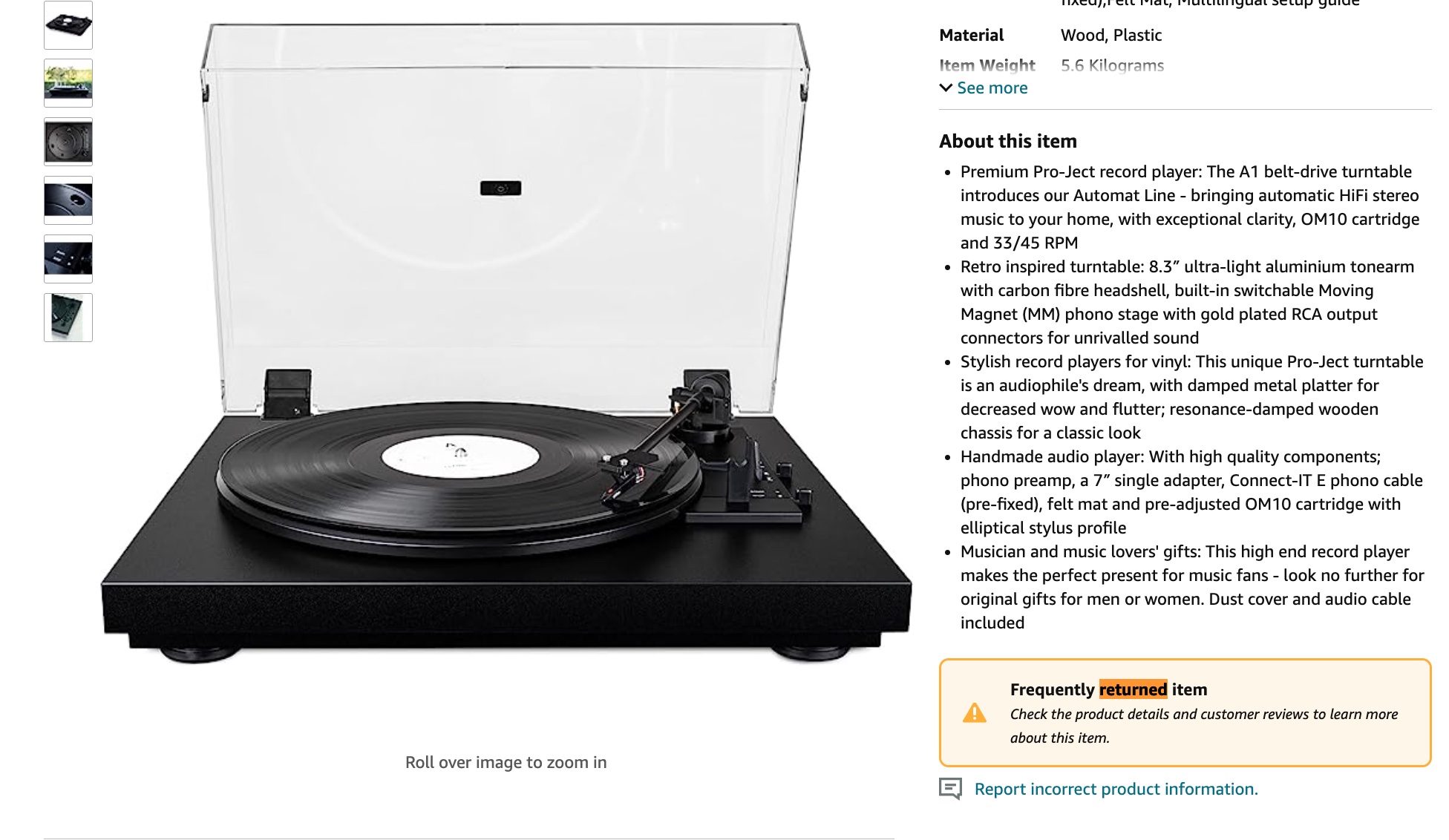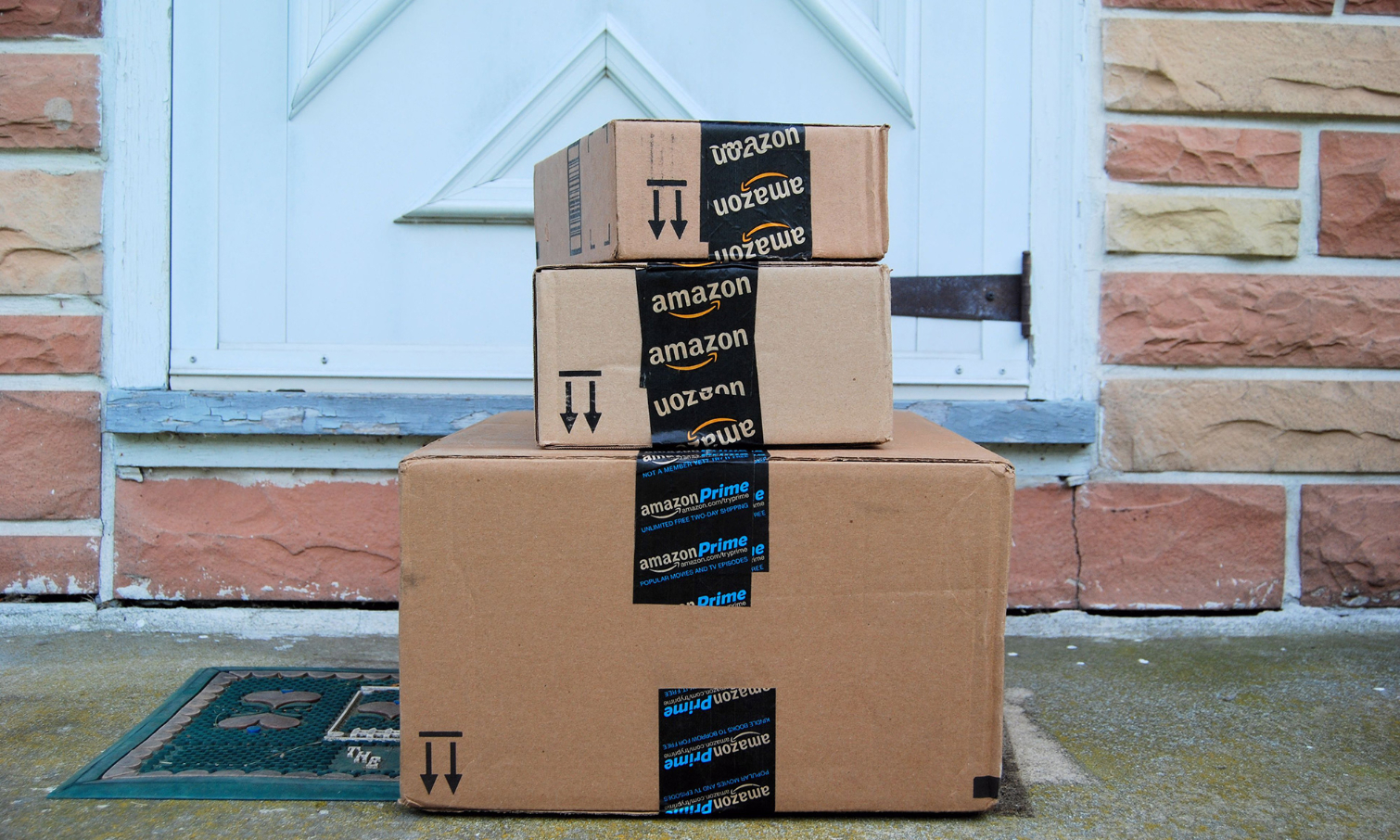Amazon just rolled out a new feature for millions of shoppers that could save you money

Amazon’s return policy is fairly generous, but it’s still a real hassle having to send a poor-quality product back. And it would seem the online retailing giant is aware of this issue as its implementing a new feature that aims to prevent shoppers from purchasing products that are often returned.
Originally reported by The Information, Amazon has begun trialing a new warning label that's currently appearing on select product pages. This notification flags certain items as “frequently returned” and advises that potential purchasers should “check the product details and customer reviews to learn more about this item.”
Naturally, this warning label is highly likely to dissuade interested parties from clicking the “buy now” button. In theory, it should lead to a drop in sales for products that are low-quality. It will also undoubtedly impact third-party sellers that attempt to mislead customers with hyperbolic marketing, doctored images and vague product information.
Where you'll see the warning labels

The Information has spotted the label on multiple products ranging from a Pro-Ject record player that retails for $499 to a funky dress that is currently on sale for $30. However, these labels are not visible to all Amazon users. Perhaps indicating the feature hasn't been finalized yet and is instead being trialed on select accounts.
Curiously, both these products have a respectable four stars from customer reviews. These high star ratings might reassure Amazon shoppers they can purchase with confidence. But if you dig deeper into the written reviews you’ll see plenty of dissatisfied customers who liked opted to return these products.
A new 'frequently returned' warning label advises Amazon shoppers to check the product details and customer reviews to learn more about items before they buy.
The label itself is clearly presented in its own box, but for our tastes its too far down the page and isn't above the fold for people shopping for products. You have to scroll beneath the product description bullet points to see it.
An Amazon spokesperson identified as Betsy Harden told The Information that the online retailer is "currently showing return rate information on some product detail pages to help customers make more informed purchase decisions.”
For now, it appears the tag is only been trialed as it appears infrequently and seemingly only on Amazon U.S. Unfortunately, until the new feature is rolled out globally, international shoppers will have to settle for doing their own research to determine if a product is worth purchasing.
Amazon isn’t just looking out for the customers

On the surface, this may appear to be a fairly altruistic move from Amazon. After all, it’s likely to cost the retailer sales in the long run as a “frequently returned” label could put many buyers off purchasing a potentially expensive product. However, Amazon is also helping itself here.
Returns are just as much of a headache for Amazon as they are for consumers. Each return costs the retailer money in processing fees, and returned items also take up valuable warehouse space. Not to mention, having to return an item is a negative experience for the customer which could in turn make them less likely to shop with Amazon in the future.
So while this new feature isn’t entirely about helping out customers, it’s very much a win-win. It should help prevent shoppers from buying poor-quality items, and it’ll result in fewer returns for Amazon to process. Fingers crossed it’s a permanent addition to the online storefront and soon finds its way into even more regions.
More from Tom's Guide
- Amazon is killing one of its most underrated shopping features
- Best Amazon deals in 2023
- What is Amazon Prime? Everything you need to know
Get instant access to breaking news, the hottest reviews, great deals and helpful tips.

Rory is a Senior Entertainment Editor at Tom’s Guide based in the UK. He covers a wide range of topics but with a particular focus on gaming and streaming. When he’s not reviewing the latest games, searching for hidden gems on Netflix, or writing hot takes on new gaming hardware, TV shows and movies, he can be found attending music festivals and getting far too emotionally invested in his favorite football team.
